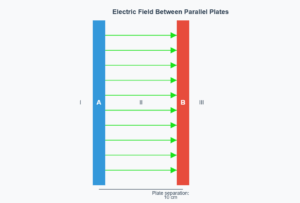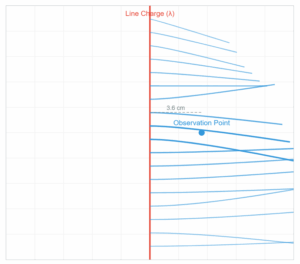Electron Transfer Simulation
This simulation demonstrates how long it takes to transfer 1 Coulomb of charge when 10⁹ electrons move between bodies each second. The calculation shows it would take approximately 200 years to accumulate this charge at this rate.
Example
Question:
If \(10^9\) electrons move out of a body to another body every second, how much time is required to get a total charge of 1 C on the other body?
Solution:
In one second \(10^9\) electrons move out of the body. Therefore, the charge given out in one second is \(1.6 \times 10^{-19} \times 10^9 \, \text{C} = 1.6 \times 10^{-10} \, \text{C}\).
The time required to accumulate a charge of 1 C can then be estimated to be \(1 \, \text{C} \div (1.6 \times 10^{-10} \, \text{C/s}) = 6.25 \times 10^9 \, \text{s}\).
\(6.25 \times 10^9 \div (365 \times 24 \times 3600)\) years \(= 198\) years.
Thus, to collect a charge of one coulomb, from a body from which \(10^9\) electrons move out every second, we will need approximately 200 years. One coulomb is, therefore, a very large unit for many practical purposes.
It is, however, also important to know what is roughly the number of electrons contained in a piece of one cubic centimetre of a material. A cubic piece of copper of side 1 cm contains about \(2.5 \times 10^{24}\) electrons.



